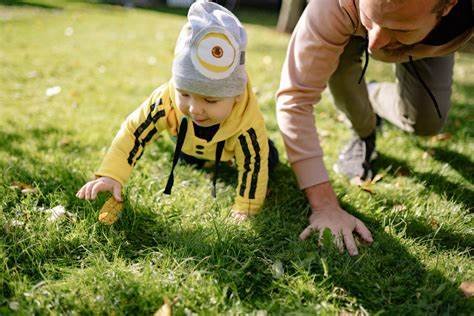Sleep is essential for a baby’s growth and development, yet many parents struggle to establish a consistent sleep routine. Sensory play—a hands-on approach to engaging a baby’s senses—can play a significant role in calming your baby and preparing them for restful sleep. Here’s how sensory play can help, along with some simple, effective techniques you can try at home.
The Connection Between Sensory Play and Sleep
Sensory play stimulates a baby’s senses—touch, sight, sound, smell, and sometimes taste. By helping them process the day’s stimuli, sensory activities can ease overstimulation, promote relaxation, and prepare their minds and bodies for bedtime.
Engaging in calming sensory activities shortly before bed can trigger the release of melatonin, the sleep hormone, while reducing cortisol, the stress hormone. This combination promotes a smoother transition from playtime to a peaceful night’s sleep.
Calming Sensory Play Ideas for Bedtime
1. Gentle Water Play
- Use lukewarm water to gently splash their hands and feet or let them play with floating bath toys.
- Incorporate soothing lavender-scented bath products to add an element of aromatherapy.
2. Soft Textures for Tactile Stimulation
- Offer a soft sensory blanket, plush toy, or textured fabric for your baby to explore.
- Use baby-safe sensory bags filled with soft items like cotton balls or water beads (sealed securely).

3. Music and Sounds
- Play calming lullabies or nature sounds, such as rainfall or ocean waves, during sensory activities.
- Use a rattle or wind chimes to create gentle, rhythmic sounds.
4. Aromatherapy for Babies
- Introduce calming scents, such as lavender or chamomile, using a baby-safe diffuser.
- Ensure the room is well-ventilated and that the scents are not too strong.
5. Dim Lighting
- Dim the lights or use a soft nightlight during sensory activities to signal it’s time to wind down.
- Consider a light projector that displays slow-moving images, like stars or waves.
Creating a Sensory-Based Bedtime Routine
Incorporate sensory play into your baby’s bedtime routine to help them associate these activities with sleep.
- Start with a Warm Bath
Begin with a calming bath enriched with sensory elements, like gentle splashes, a soft washcloth, and calming scents. - Quiet Playtime
After the bath, engage in quiet sensory play with soft toys or a sensory board. - Soothing Massage
Gently massage your baby with baby lotion or oil. Focus on their arms, legs, and back to help them relax. - Storytime or Song
End the routine with a short bedtime story or lullaby, accompanied by dim lighting and soft sounds.
Tips for Effective Sensory Play Before Bed
- Keep it Calm: Avoid high-energy sensory activities close to bedtime to prevent overstimulation.
- Follow a Routine: Consistency helps babies recognize cues for sleep.
- Monitor Responses: Pay attention to how your baby responds to different activities. Adjust or remove elements that seem to cause restlessness.
- Set the Mood: Create a peaceful environment by minimizing noise and distractions.
The Role of Sensory Play in Emotional Regulation
Sensory play can also help babies regulate their emotions, reducing anxiety and fussiness that may interfere with sleep. Activities like gentle stroking, rhythmic rocking, or the soothing hum of white noise can comfort your baby, creating a sense of security.
When to Seek Expert Advice
While sensory play is a great tool, some babies may struggle with sleep due to underlying issues such as colic, reflux, or developmental milestones. If your baby consistently has trouble sleeping, consider consulting a pediatrician or sleep consultant for personalized guidance.
Final Thoughts
Sensory play isn’t just about entertainment—it’s a powerful tool to help babies relax and prepare for restful sleep. By incorporating calming sensory activities into your baby’s nightly routine, you can foster better sleep habits while strengthening your bond.
Try these techniques and watch your baby drift off into a peaceful slumber, ensuring a happier and healthier start to their day.










